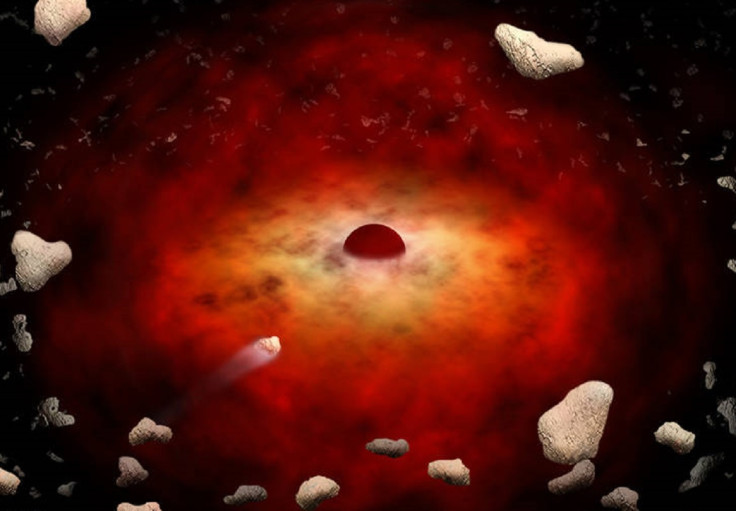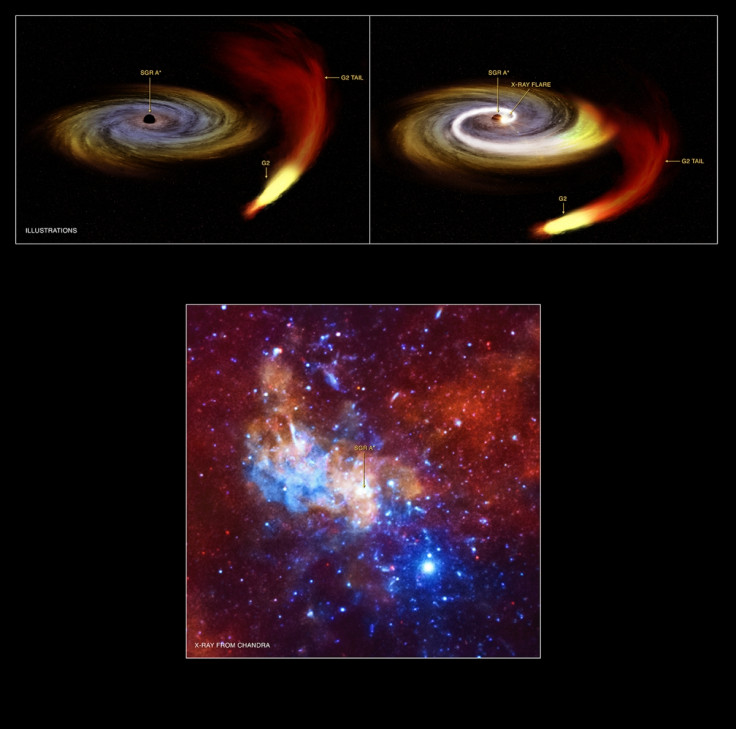Nasa: Supermassive black hole at centre of Milky Way is behaving strangely and no one knows why

The supermassive black hole in the centre of the Milky Way has started acting up – and Nasa scientists do not know why. The normally quiet black hole has been emitting more X-ray flares than usual, three orbiting space telescopes have shown.
Researchers have been monitoring the black hole (called Sagittarius A*, or Sgr A* for short) using the Chandra X-ray Observatory, the European Space Agency's XMM-Newton and the Swift satellite. Combining information from these three allows astronomers to trace activity from the black hole over the past 15 years.
The black hole is located between 25, 000 to 28, 000 light years from Earth. It weighs more than four million times the mass of the sun and X-rays from it are produced by hot gas flowing towards it.
The study, accepted by the Monthly Notices of the Royal Astronomical Society, found that Sgr A* had been producing about one bright X-ray flare every 10 days. However, in the past year this has increased tenfold, with one large flare every day.
What has caused this increase is unknown, but the team from the Max Planck Institute for Extraterrestrial Physics in Germany said it could be something to do with a mystery dusty object that recently passed it. The object, G2, was thought to be an extended cloud of gas and dust, but when it passed the black hole in 2013, its appearance did not change much. This led scientists to suggest it could be a star inside a dust cocoon.

Study author Gabriele Ponti said: "For several years, we've been tracking the X-ray emission from Sgr A*. This includes also the close passage of this dusty object. A year or so ago, we thought it had absolutely no effect on Sgr A*, but our new data raise the possibility that that might not be the case."
Mark Morris, of the University of California at Los Angeles, added: "There isn't universal agreement on what G2 is. However, the fact that Sgr A* became more active not long after G2 passed by suggests that the matter coming off of G2 might have caused an increase in the black hole's feeding rate."
If the G2 is responsible for the spike, it would be the first sign of excess material falling on to the black hole as a result of the cloud's close passage. Scientists say gas would have been captured by the black hole's gravity and interacting with it.
However, another idea about the increase in activity is that it is just a common trait of black holes we do not know about. "It's too soon to say for sure, but we will be keeping X-ray eyes on Sgr A* in the coming months," said co-author Barbara De Marco, also of Max Planck. "Hopefully, new observations will tell us whether G2 is responsible for the changed behavior or if the new flaring is just part of how the black hole behaves."
© Copyright IBTimes 2025. All rights reserved.






















